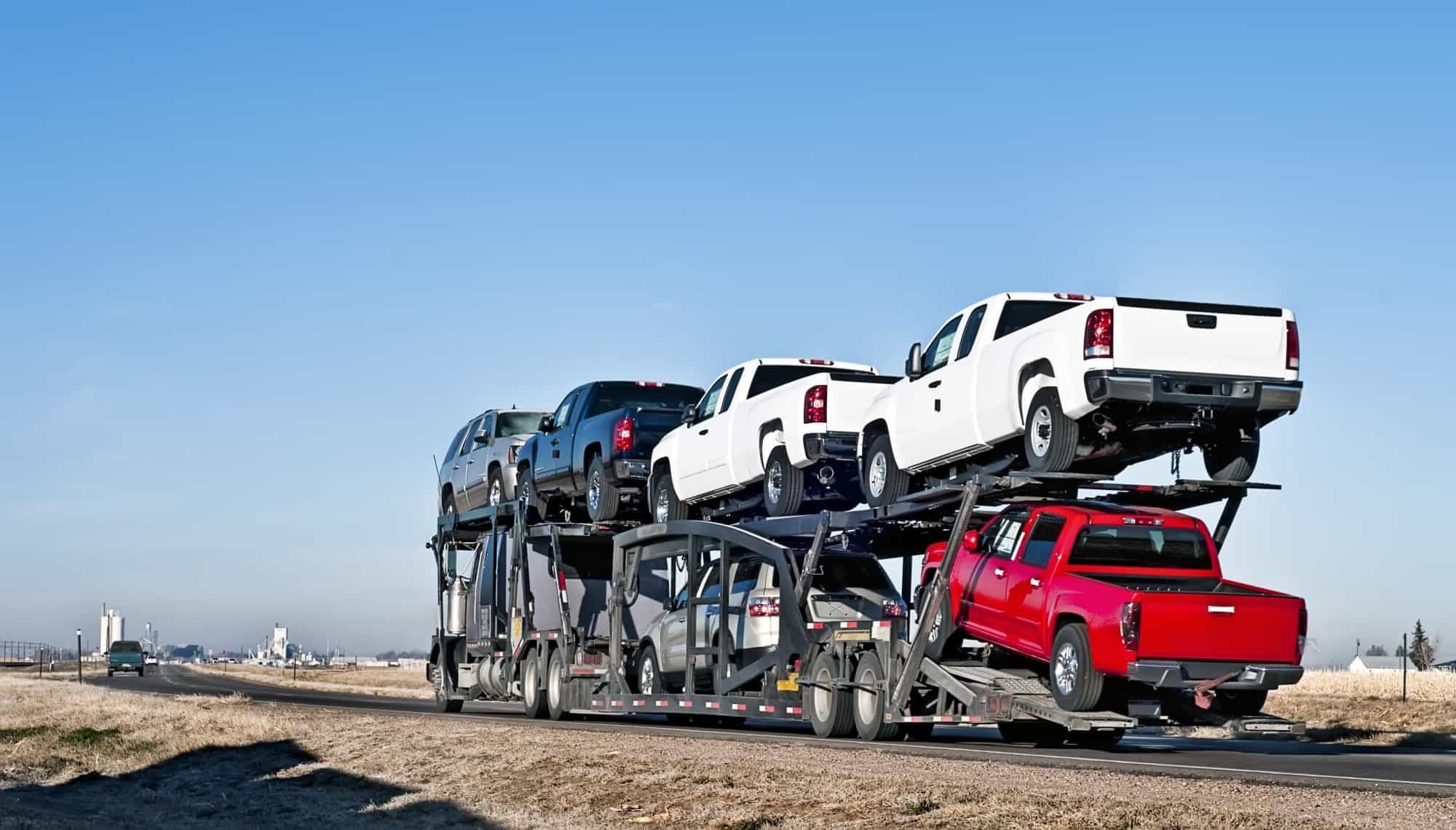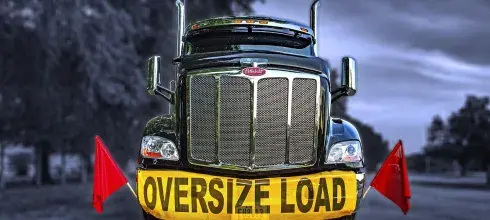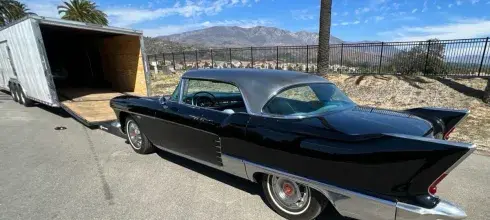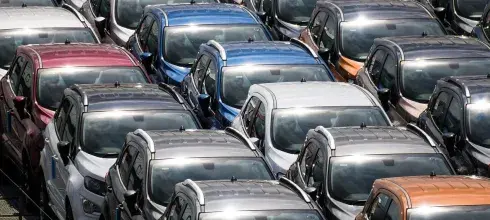If you ever need to move your car across the country, there are many different options available. Driving yourself is one of the most obvious. It certainly seems a cheap and easy way to do it. A big downside is the wear and tear a road trip will entail.
Plus, if you’re moving long-distance, car towing may be required to move your vehicle and your stuff in a moving truck at the same time, eliminating the option of driving your vehicle yourself altogether.
Luckily, you have plenty of other options, one of which is hiring an auto transport company to provide long distance towing services. Another option that many people consider is to tow your vehicle from point A to point B using a towing dolly.
In this article, we’re going to explore what towing your vehicle entails, compared to using an auto transport company to transport your vehicle for you. By the time you’ve finished reading, you should have all the information necessary to make an informed decision about the cheapest way to tow a car long distance.
Three Towing Options
When it comes to towing vehicles, there are basically three options:
- Using a tow dolly
- Flat towing
- Or using a trailer.
| Vehicle transport type | Advantages | Disadvantages |
|---|---|---|
| Auto transport |
|
|
| Tow dolly |
|
|
| Towing trailer |
|
|
| Flat towing |
|
|
Compare Methods For Car Towing Over Long Distances
- Tow dolly trailer
- Tow dolly vs. towing trailer
- Tow dolly vs flat towing
- Tow dolly vs. auto transport
Tow Dolly Trailer
What is a Dolly Trailer?
A dolly trailer, tow dolly, or car dolly is a trailer with two wheels that lifts only your car’s front wheels. When you tow a vehicle using a car transport dolly, the car’s rear wheels stay on the ground.
Whether this option suits your car will depend on its make and model, its weight, length, and ground clearance. Dollies aren’t designed for every kind of car.
The pros and cons of using a tow dolly
Pros
- It’s cheaper.
- It’s perfect for short-distances.
- You can stay with your car at all times.
Cons
- Not suitable for heavier vehicles.
- Not suitable for longer distances.
- Increased wear and tear.
- It takes a long time to set up.
- Increased gas consumption.
- There are safety concerns.
What cars can be towed on a car dolly?
What cars can be dolly towed is a reasonable question to ask. Let’s see if we can answer it.
Tow dollies are designed for front-wheel vehicles. Your vehicle should also have a 5000 pounds “curb weight” or less. To clarify whether you can tow your car using an auto transport dolly, it’s best to consult your vehicle owner’s manual.
It is possible to tow a rear-wheel-drive vehicle on a tow dolly, but you’ll have to disconnect and remove the driveshaft so you don’t damage the transmission.
What are common car dolly towing issues?
A dolly is easy to store and cheaper to buy or rent than any other towing options. However, it does have its own set of pitfalls.
Weight restrictions
You can’t carry as much weight with a car dolly as you can with a trailer. Typically, a front-wheel or all-wheel drive car can’t exceed 3,450 pounds. A rear-wheel-drive car can’t weigh more than 3,900 pounds.
According to a report released by the US Environmental Protection Agency, the average car weight tips the scales at more than 4,000 pounds, which means there will be lots of car owners who can’t use a tow dolly to move their car. Let’s give you some examples:
- Ford Mustang: 3,700 lbs
- Dodge Charger: 4160lbs
- Jeep Grand Cherokee: 5100lbs
- Mercedes Benz E-class: 3800lbs
- Chevrolet Silverado: 4800lbs
- Cadillac Escalade: 5800lbs
- Toyota Highlander: 4508lbs
Some of the vehicles that are too heavy for a dolly include SUVs and older steel-frame cars.
Can you tow a truck with a car dolly?
The simple answer is no. A truck is far too heavy to be towed with a dolly. Tow dollies are designed to carry no more than 3,450 lbs, or 3,900 lbs if the vehicle is rear-wheel-drive.
Clearance
Clearance can be an issue if you’re considering towing using a dolly. If, for example, your car is long in the front, low to the ground, or has ground effects, some of the car components may drag on the ground.
Try to tow a car of this kind, and you run the risk of damaging the bumpers, body kit, and undercarriage parts such as deep transmission pans.
Maneuverability
Compared to a car trailer, a dolly is very difficult to maneuver. If you use a trailer, all four wheels of your vehicle are off the ground, which means you can back it up if necessary. This is not the case with a tow dolly. It is nigh on impossible to back up a tow dolly, which can be a problem if you need to back up to drop your vehicle in the correct place at your final destination.
Hook-up procedures
Hooking up a car to a tow dolly is also more complicated than loading a vehicle onto a trailer. You have to leave two wheels on the ground when you use a tow dolly, and the drive wheels must be extra secure to ensure the car stays on the dolly.
To keep the car in place, you can’t block your vehicle’s wheels or use the emergency brake like you would if you were using a trailer.
If you want to tow a rear-wheel-drive car, you have to take out the driveshaft and place it forward on the tow dolly because of front clearance issues.
Wear and tear
When you tow a car with a dolly, two wheels are left on the ground, which means more wear and tear on those tires. The longer you use the dolly, the more wear and tear because more weight is being put on the tires when one end of the car is lifted.
How much is a car dolly?
The cost of a car dolly trailer ranges between $2,000 to $4,500. The actual price depends on features such as materials used, the dolly’s towing capacity, and the type of brakes. This is a considerable outlay for a one-off journey, but there is the option of renting.
How much does a car dolly cost to rent?
The typical cost to rent a car dolly is between $40 and $60 per day. The price depends on several things such as the location, whether the trip is one-way, and if the dolly will be picked up and dropped off at the same site.
Companies that rent tow dollies include U-Haul, Budget Truck Rental, and Penske Truck Rental. Apart from U-Haul, most dolly rental companies only allow you to use the dolly behind one of their rental trucks. It’s not usual for you to be allowed to tow with a rental dolly behind your car.
How do you tow a car with a car dolly?
When you use a tow dolly, you must hook your car up correctly before you start towing. If you want to know how to tow a vehicle on a car dolly, here are the steps you must follow:
1. Hook up the dolly
You need a ball hitch and a trailer lighting receptacle on the towing vehicle to tow a dolly. Not all trailer lighting receptacles are the same, so make sure the dolly and lights match your car. If they don’t match, you’ll need an adapter. The tow rig rental company generally provides this, or you can buy one at your local auto parts store.
When you hook up the dolly, make sure you’ve got the right hitch and that it’s the right size. Then plug in the lights and make sure they correspond to your towing vehicle.
Park the dolly as close as you safely and reasonably can to the front of the car you want to tow. Try to get it on flat, level ground. Leave the dolly in park, and secure the parking brake.
Your dolly should come equipped with nets, straps, chains, or a combination of all three. These are key to securing your vehicle to the dolly. Lay these out, so they’re ready to wrap around the tires when you need them.
If the dolly you’re using comes with clamp-on or magnetic tail lights, make sure you lay them out of the way. Also, keep the connection for your car’s lighting safe.
Get a friend to help you while you drive the vehicle onto the dolly. They can guide you as you drive very slowly, making sure you’re as well-centered as possible. When your car is in the correct position, apply the parking brake, shift into park or both.
You can now wrap the nets around the tires and secure them. Alternatively, if you’re using chains or straps, wrap these around your axle. There may be a hook you can use, or you can connect directly to your car’s tow tongue or D-ring.
Never back your car onto the dolly. Before you head off, make sure your vehicle is well-centered and securely strapped down.
2. Connect the lights
Tow dollies typically have light built-in. However, some have a second set of lights you magnetically attach to your towed vehicle or clamp to the bumper. Use a thin layer of plastic or cloth to prevent any damage to your paintwork.
Your dolly may also have a connection to use your tow car’s lights. Your owner’s manual should have details on where and how to plug it into your towed car’s electrical system.
Before you head out, check all the lights to be sure they’re working correctly. Also, check all the fastenings to make sure they’re tight.
3. Disconnect the axle
If you’re towing a rear-wheel drive or four-wheel drive vehicle, you’ll need to disconnect the rear axle. To do this, you first have to find the point underneath where the driveshaft connects to the differential.
When you’ve found it, you then have to look for the u-joint that holds the driveshaft to the differential housing.
Next, secure the driveshaft to the undercarriage of the towed vehicle with the help of a bungee or strap.
Now you can remove the four bolts at the u-joint and push the driveshaft as far as possible to adjust the bungee strap or cord.
How fast can you go with a tow dolly?
The maximum speed you can go when you tow a car with a dolly is 55MPH. It’s also essential to stay in the two right lanes on a multi-lane highway.
Is a tow dolly good for long-distance?
People often wonder when it comes to tow dollies vs. auto transport, which method is the best way to tow a car long distance.
The simple answer? Auto transport is best for long-distance travel.
Tow dollies are ideal for shorter distances, for example, within the same state. They are a more affordable option, and you can expect less wear and tear than on a long-distance journey.
Using a tow dolly for a long distance is not a good option. It will put your car through a lot of wear and tear, especially the vehicle’s rear wheels. Towing an elevated vehicle long distances may also undermine the structural integrity of your car.
Are car dollies safe?
One significant problem with car dollies is something called trailer sway. This is a fishtailing movement that occurs when you drive at high speeds. It’s also one of the leading causes of towing accidents and something more likely to happen if you drive when the weather is bad. Driving during bad weather is dangerous because the roads get slippery, and it’s more difficult to control the vehicle.
A car trailer is a safer option because you load the entire vehicle onto the trailer.
You may have noticed that we’ve mentioned using a trailer several times in this article. Let’s look at whether this is a viable alternative to using a tow dolly.
Tow Dolly vs. Towing Trailer

A car trailer is more expensive than a tow dolly, but there will be less wear and tear on your vehicle. A trailer is also safer to tow, and you can use it to transport a wide variety of vehicles.
What’s the difference between a tow dolly and a car trailer?
With a car trailer, you load the entire vehicle onto the trailer and piggyback it to your chosen location. It can be hard work for the vehicle doing the towing, but for the vehicle being towed, it’s a walk in the park.
How easy is a car trailer to use?
There’s a bit of a learning curve for both a dolly and a trailer, but a trailer is easier to handle. To begin with, it’s much easier to load and unload. A car trailer is more straightforward to haul than a tow dolly. However, it does take practice to pull anything behind your vehicle.
Car trailer wear and tear
From a wear and tear perspective, a trailer is better than a dolly. The reason for this is that the vehicle you’re towing never makes contact with the ground. Your odometer never changes, your tires don’t lose and tread, and your drivetrain is unaffected.
However, you have to take into account the extra strain being put on the vehicle that’s doing the towing. And because a trailer weighs much more than a dolly, it can get close to or even exceed your vehicle’s towing capacity, adding extra strain.
Pros and cons of using a car trailer
Pros
- Door-to-door service
- Safe option.
- No wear and tear on your vehicle.
Cons
- Towing a trailer takes skill and practice.
- It can work out to be more expensive when you consider other costs such as accommodation, food, and additional gas.
Tow Dolly vs Flat Towing
Flat towing, also known as four-down towing or dinghy towing involves attaching a tow bar to a suitable car, SUV, or pick-up and letting the vehicle roll along behind the towing vehicle on its own four tires.
Pros
- Equipment needed usually costs less than a tow dolly.
- Quick, one-person hook-up and disconnect.
- No additional storage needed at the final destination.
Cons
- Won’t work on all vehicles due to drivetrain limitations.
- Can cause feathering of tow vehicles front tires over time.
- Most flat-tow dinghies can’t be backed more than a few feet.
- Not suitable for long distance.
We’re left with one final option to consider, and that’s to book an auto transport service.
Tow Dolly vs. Auto Transport

We’ve already looked closely at using a tow dolly, but to understand whether auto transport is the better option, you need to appreciate the differences between these two options.
How they work
A tow dolly tows a vehicle by lifting the car’s front two wheels while the rear wheels stay on the ground.
With an auto transport company, your vehicle is collected from outside your home and loaded onto a car transport trailer. No wheels of your car touch the ground, and it is transported safely to your chosen destination.
Vehicle compatibility
Tow dollies are designed for towing front-wheel-drive vehicles. All-wheel-drive, four-wheel drive, and rear-wheel-drive vehicles can be transported, but the driveshaft has to be disconnected. There is also a weight restriction for a tow dolly. Front-wheel-drive vehicles have to weigh less than 3,450 pounds, and rear-wheel-drive vehicles less than 3,900 pounds.
There are no such restrictions on auto transport. An auto transport company can move vehicles of all shapes, sizes, and weight. Heavy cars, long, short, and modified vehicles are no problem for an auto transport provider like SGT Auto Transport.
Ease of setup
Hooking a vehicle up to a dolly is a complex undertaking, especially if you’re totally new. You also have to make sure the drive wheels have extra security to reduce any accident risk. Towing a rear-wheel vehicle is problematic because of the front clearance issue.
When it comes to auto transport, minimal effort is required on your part. The carrier company will load and unload the car. You just need to check your vehicle over before it’s loaded and upon delivery to ensure everything is in order.
Maneuverability
We’ve already explained that maneuvering a tow dolly is very difficult. If you need to back up to set the towed vehicle down, you’ll find it very challenging.
There is no such problem for car carriers. Vehicles are loaded onto the carrier, and the experienced driver will have no issues trying to back up and maneuver the trailer.
Cost
A tow dolly is an affordable option, especially if you’re thinking about renting. There are, however, other costs to take into account. There will be the cost of fuel to consider, accommodation, food, and drinks along the way. Don’t forget to add the cost of additional wear and tear to the bill as well.
Add all these extra costs up, and the total cost is comparable with booking an auto transport service.
Wear and tear
When you tow a car using a dolly, the rear wheels are on the ground, and they have more weight on them because the front wheels are lifted. Over time, this means there is some risk of additional wear and tear.
Clearance issues are another consideration, as some vehicles are low to the ground or long in the front. It could mean that some components get dragged while towing, causing damage to bumpers, undercarriage parts, and body kits.
When a car is loaded onto a carrier trailer, there is minimal risk of wear and tear on your tires. If you choose an open trailer, your vehicle is exposed to the elements, but the risk of damage is virtually non-existent.
Safety issues
Trailer sway is a serious issue and one of the main problems with a car dolly. It is a risk when you drive at high speed and in bad weather when the roads become very slippery.
Auto transport, on the other hand, is a much safer option. Your vehicle is safely secured onto an auto transport trailer. You can travel to your final destination in a much safer way too. Why not sit back and relax on a train, plane, or bus, safe in the knowledge that your car is being safely transported to its final destination.
Speed issues
The transit times are very different when you compare a tow dolly vs. auto transport. When you tow a dolly, you have to maintain a slower-than-average speed to ensure the safety of yourself, the tow vehicle, and other road users.
In contrast, an auto transport provider can move a little faster. There are some restrictions on the speed an auto transport trailer can travel, but they are not as low as a tow dolly.
Auto transport options
Choose auto transport and you get several options to consider. Depending on your needs an auto transport company can tailor their service to meet your requirements.
If your car is a standard model then open car transport is suitable. Whereas, if your vehicle is high-value, unique, custom, classic, vintage, or modified, enclosed car transport is a better option.
When time is of the essence you might want to book a guaranteed pick-up or an express auto transport service.
Discounts are also available for certain clients, for example, members of the military and snowbirds.
Pros and cons of auto transport
Pros
- Best way to tow a car across the country.
- It’s much safer.
- It’s virtually effortless and stress-free.
- Saves time.
- There is no risk of additional wear and tear.
- All types of vehicles can be transported.
- No additional mileage is clocked up on your car.
- Distance is no object.
- Multiple shipping is an option.
- Extra protection is available for valuable vehicles with enclosed auto transport.
- The service is door-to-door.
- Expedited service is available if you’re in a hurry.
Cons
- Not all locations are accessible for auto transport trucks and trailers.
SGT Auto Transport: Helping With Your Car Transport Needs Since 2014
If you ever need to move a car across the country, across state lines, or from one city to another, don’t hesitate to get in touch with us here at SGT Auto Transport. Our shipping advisors are waiting to hear from you on the phone; just call (864) 546-5038. Alternatively, if it’s easier, you can feel free to use our Live Chat option







